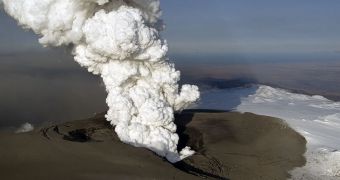Everyone knows how average volcanoes look like, a large mountain with active interior, which funnels magma from the mantle onto the planet's surface, where it turns to lava and devastates everything around. But a special type of such structure is represented by glaciovolcanoes, which are similar to the “regular” ones in most aspects, other than the fact that they are covered with ice and glaciers. The interplay between the erupting magma and gas and the ice spreads on top can generate very bad consequences for the area around the volcano.
Eyjafjallajokull is the name of the Iceland-based volcano that erupted recently, spewing massive amounts of ash and other byproducts over Europe, paralyzing air traffic, and prompting public health concerns in several countries on the old continent. It is however only one of a larger number of such structures. Others include the Katla, Hekla and Askja mountains, also in Iceland, the Edziza formation in British Columbia, Canada, as well as Mount Rainier and Mount Redoubt, in the United States. All of these volcanoes can have similar effects to Eyjafjallajokull in their respective areas.
“When an ice-covered volcano erupts, the interplay among molten magma, ice and meltwater can have catastrophic results,” explains the US National Science Foundation (NSF) Division of Earth Sciences program director, Sonia Esperanca. The DES is an organization that has invested considerably in studies focused on how glaciovolcanoes erupt, and also on the consequences of such events. One of the most devastating side-effects is the floods. They are called “jokulhlaups” in Iceland, and scientists in the country were fortunately ready for them when the glaciovolcano erupted.
“We need more studies of present and old eruptions to be prepared to respond to a volcano-ice crisis in North America – or elsewhere around the globe,” the NSF expert adds. At this point, the DES funds scientists Ben Edwards, from the Dickinson College, and Ian Skilling from the University of Pittsburgh, in investigating glaciovolcanoes. The research is done on site on Mt. Edziza, in British Columbia, Canada, and in Iceland too. “Although studies of glaciovolcanism are currently focused on longer-term questions of climate change, the research is helping scientists understand all active and dormant ice-covered volcanoes, including many in North America,” says Esperanca.

 14 DAY TRIAL //
14 DAY TRIAL //